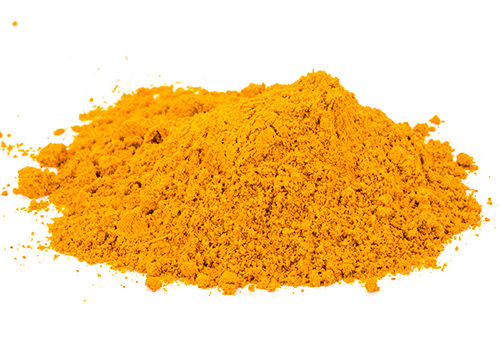
Antioxidants help ward off free radicals that can cause damage in the body. Researchers believe curcumin is an immunomodulatory agent—able to help the body’s immune system maintain healthy balance and suppress the expression of proinflammatory cytokines (1, 2).
One thing curcumin cannot do, like any other supplement, is cure, treat or prevent any disease.
Curcumin and the Brain
Curcumin offers many benefits to brain health, and researchers are studying its effects on those with Alzheimer’s disease (though it cannot treat or prevent the disease).
Turmeric has been consumed in India for approximately 2,500 years as food and medicine, and some believe this is the connection to this community’s superior track record for brain health. “The prevalence of Alzheimer’s disease among adults aged 70–79 years in India is 4.4 times less than that of 70–79 years in the United States” (3).
This neurological disorder causes progressive and debilitating memory loss as well as cognitive decline over time. While the cause isn’t entirely known, many believe these effects on cognitive function are caused by amyloid plaques and neurofibrillary tangles in the brain. According to the National Institute of Aging, “Amyloid plaques are insoluble deposits filled with toxic protein peptide and neurofibrillary tangles are a collection of twisted proteins inside the cell” (4). The tangles make inter-neuron communication difficult, which can ultimately result in neuron death and brain shrinkage (4). The presence of amyloid plaque also induces inflammation in the brain.
Curcumin has a strong antioxidant effect that thwarts free radical damage and decreases inflammation. It also “decreases the low-density lipoprotein oxidation and the free radicals that cause the deterioration of neurons, not only in Alzheimer’s disease, but also in other neurodegenerative disorders such as Huntington’s and Parkinson’s disease” (5).
Researchers have studied these effects in the lab and in small animals, but there have been fewer studies that demonstrate the effects of curcumin in human subjects. A few studies found no positive effects in humans, but it’s possible the formulations of curcumin used were not potent enough or ingredients with low bioavailability were used. There was a difference however when improved formulas were used. One study showed that when healthy adults took a form of curcumin that had better bioavailability (400 mg), there was a substantial improvement in short-term memory up to three hours after consumption (6).
Curcumin and Joints
The inflammation-support properties of curcumin may also benefit proper joint health. Studies have shown improvement in rheumatoid arthritis symptoms in patients during a flare up when using curcumin alone, as well as when paired with painkillers like diclofenac (used to soothe mild to moderate inflammatory pain) (7).
In a two-month study, 45 people with active rheumatoid arthritis tested the effects of curcumin during a flare up. The patients were divided into three groups. Group One only took 500 mg of super-absorbent curcumin. Group Two received 50 mg per day of diclofenac along with a curcumin formulation. And, Group Three received only diclofenac (7).
At the end of the study, all patients showed significant improvement. The curcumin-only patients improved 44.5%, the curcumin–diclofenac group improved 44.4% and the diclofenac-only group improved the least at 42.1% (7).
Another study showed that curcumin improved pain about as much as an NSAID. For a month and a half, 107 patients received doses of ibuprofen (800 mg/day) or curcumin (2 g/day). Patients had significant improvements of pain while idle or exercising during the whole trial with either ibuprofen or curcumin (8). These effects may possibly be attributed to curcumin’s ability to help regulate the expression of inflammatory enzymes (9). Curcumin also seems to lack the adverse side effects that most inflammatory drugs cause (9).
Bioavailability
One concern about curcumin is its bioavailability, meaning how much the body absorbs and can potentially use for normal, healthy functions.
Researchers have explored several ways to tackle this issue such as reducing the particle size, pairing it with piperine and using certain curcuminoids. The average particle size of regular curcumin is 22.75 µm. One brand decreased the particle to 0.19–0.3 µm, which makes curcumin easier to absorb (10). Pairing curcumin with piperine, a natural inhibitor of intestinal acid, helps slow down the quick curcumin metabolization (11). Last, focusing on curcuminoids, which are derivatives of curcumin, makes the ingredient more soluble and bioavailable (12).WF
References1. G.C. Jagetia and B.B. Aggarwal, “’Spicing Up’ Of The Immune System By Curcumin,”J. Clin. Immunol. 27 (1), 19–35 (2007). 2. J-M Zhangn and J. An, “Cytokines, Inflammation and Pain,” Int. Anesthesiol. Clin.45(2): 27–37 (2007). 3. S. Mishra and K. Palanivelu, “The Effect Of Curcumin (Turmeric) On Alzheimer’s Disease: An Overview,” Ann. Indian Acad. Neurol.11(1): 13–19 (2008). 4. National Institute of Aging,www.nia.nih.gov/alzheimers/publication/part-2-what-happens-brain-ad/hallmarks-ad, accessed Oct. 22, 2015. 5. S. Mishra and K. Palanivelu, “The Effect Of Curcumin (Turmeric) On Alzheimer's Disease: An Overview,”Ann. Indian Acad Neurol. 11 (1), 13–19 (2008). 6. Alzheimer’s Drug Foundation,www.alzdiscovery.org/cognitive-vitality/report/curcumin, accessed Oct. 22, 2015. 7. S. Evans, “Safely Manage Joint Inflammation: Curcumin,”www.lifeextension.com/magazine/2012/8/safely-manage-joint-inflammation/page-01, accessed Oct. 22, 2015. 8. V. Kuptniratsaikulet al.,“Efficacy and Safety Of Curcuma Domestica Extracts In Patients With Knee Osteoarthritis,”J. Altern. Complement. Med.15 (8), 891–897 (2009). 9. A. Goelet al., “Curcumin as ‘Curecumin’: From Kitchen To Clinic,”Biochem Pharmacol.75(4), 787-809 (2008) 10. “Theracurmin,”https://wholefoodsmagazine.com/product-profiles/product-profiles/product-profiles-theracurmin, accessed Oct. 22, 2015. 11. G. Shobaet al.,“Influence of Piperine on the Pharmacokinetics of Curcumin in Animals and Human Volunteers,”Planta Med. 64 (4), 353-356 (1998). 12. Sabinsa,www.sabinsa.com/products/faq/c3reduct, accessed Oct. 22, 2015.
Published in WholeFoods Magazine, December 2015









